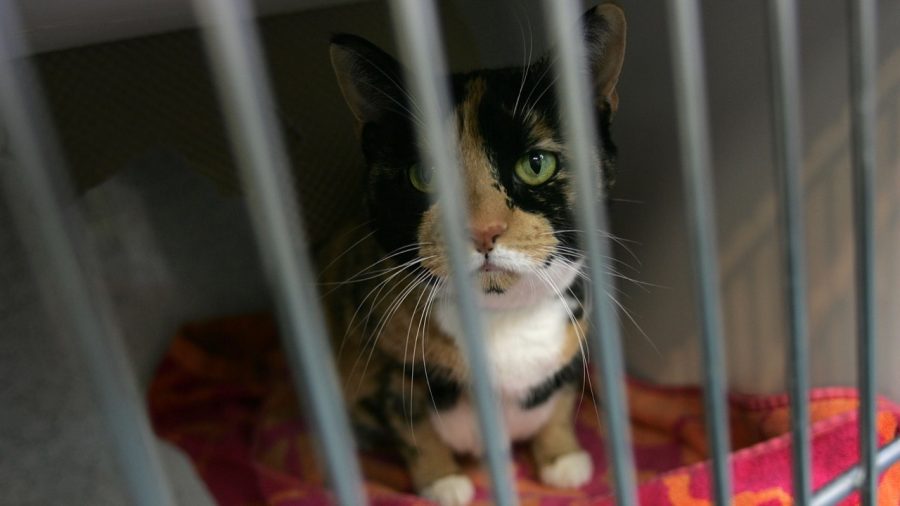A Florida woman was shocked to see a hospital bill for $48,512 after she was treated for a kitten bite.
Wildlife biologist Jeannette Parker had stopped her car to feed a stray kitten on the road. She was offering it some tuna that she had in her car when it chose to bite her finger, NPR reported.
A wildlife biologist goes to the ER after a stray cat bites her, gets preventive rabies treatment. Total bill: $48,512. This is the mission of the hospital that treated her. https://t.co/RcJFu8v2DX pic.twitter.com/B4m95baGHE
— Bob Herman (@bobjherman) February 27, 2019
She headed to Mariners Hospital after finding the local health department had closed. She spent around two hours in the emergency room. Medical staff gave her two kinds of injections and an antibiotic. She never met with a doctor.
Parker was given treatment for risk of exposure to rabies. The hospital assured her that no mistake had been made on the bill, although the cost was over 10 times the national average for rabies treatment.
A stray kitten she was trying to feed nipped her and broke the skin. Worried about rabies, she went to a hospital and received two injections and an antibiotic.
Then the bill came — for a total of $48,512. https://t.co/mQQA1a2y6n
— NPR (@NPR) February 27, 2019
Most of the cost on the bill to her insurer went to pay for rabies immune globulin, for which the hospital charged $46,422.
“I have never heard anything that high for immune globulin,” said independent biomedical consultant Charles Rupprecht, a World Health Organization technical adviser on rabies, via NPR. “How is that possible?”
At the wholesale price of $361.26 per milliliter, the hospital would have paid $4,335 for Parker’s 12-milliliter dose.
Not good !! We have a massive animal population here in the states already !! How does a Dog get shipped in here and tests positive for rabies? pic.twitter.com/zQrWXFSBxw
— Annie G (@Voice4yourPets) February 28, 2019
The $46,422 charge meant that the hospital had charged Parker according to the non-wholesale list price of $7,737 per two-milliliter dose.
The month after Parker was treated, the hospital lowered its list price for rabies immune globulin by 79 percent to $1,650 per two-milliliter dose. At that price, Parker would have been charged around $9,900—a price much lower than what she was billed for but still well above the national average.
Because of Parker’s health coverage under her husband’s insurance, much of the total cost was covered. She still has to pay $4,191 not covered by insurance, but is trying to get the hospital to resubmit the bill to her insurance company as an accidental injury, which would cover the entire fee if accepted.
A person who contracts rabies needs a series of shots to prevent an infection. Once a rabies infection establishes itself in the body, it is usually fatal, according to the Mayo Clinic.
Vaccine-preventable diseases include:
Cervical cancer
Cholera
Diphtheria
Hep B
Influenza
Japanese encephalitis
Measles
Mumps
Pertussis
Pneumonia
Polio
Rabies
Rotavirus
Rubella
Tetanus
Typhoid
Varicella
Yellow Fever#VaccinesWork! pic.twitter.com/Os15r9jGNq— World Health Organization (WHO) (@WHO) February 23, 2019
According to the Mayo Clinic, a rabies treatment isn’t necessary for every animal bite. Professionals usually need to determine if the offending animal has rabies, given that it can be found. If it can’t be found, then an assessment would be made over whether a rabies shot is needed.
The rabies situation in the United States has changed. Today, most rabies cases occur in wild animals. Before 1960, most occurred in domestic animals. Wild carnivores and bats are the usual carriers of rabies today, according to the CDC.
#DYK: Every dog and cat more than four months old must be licensed in Pinellas County. The license certifies that your pet has been vaccinated against rabies by a veterinarian or by Animal Services. New residents must obtain a new license within 30 days. https://t.co/YwAxwQuo0e pic.twitter.com/0aF76RM8sV
— Pinellas County (@PinellasCoNews) February 28, 2019
The CDC also mentions risk from interaction with raccoons, skunks, and foxes.
Initial symptoms include fever, headache, and general weakness—not unlike many illnesses. But as the infection progresses, symptoms could include “insomnia, anxiety, confusion, slight or partial paralysis, excitation, hallucinations, agitation, hypersalivation (increase in saliva), difficulty swallowing, and hydrophobia (fear of water).”


